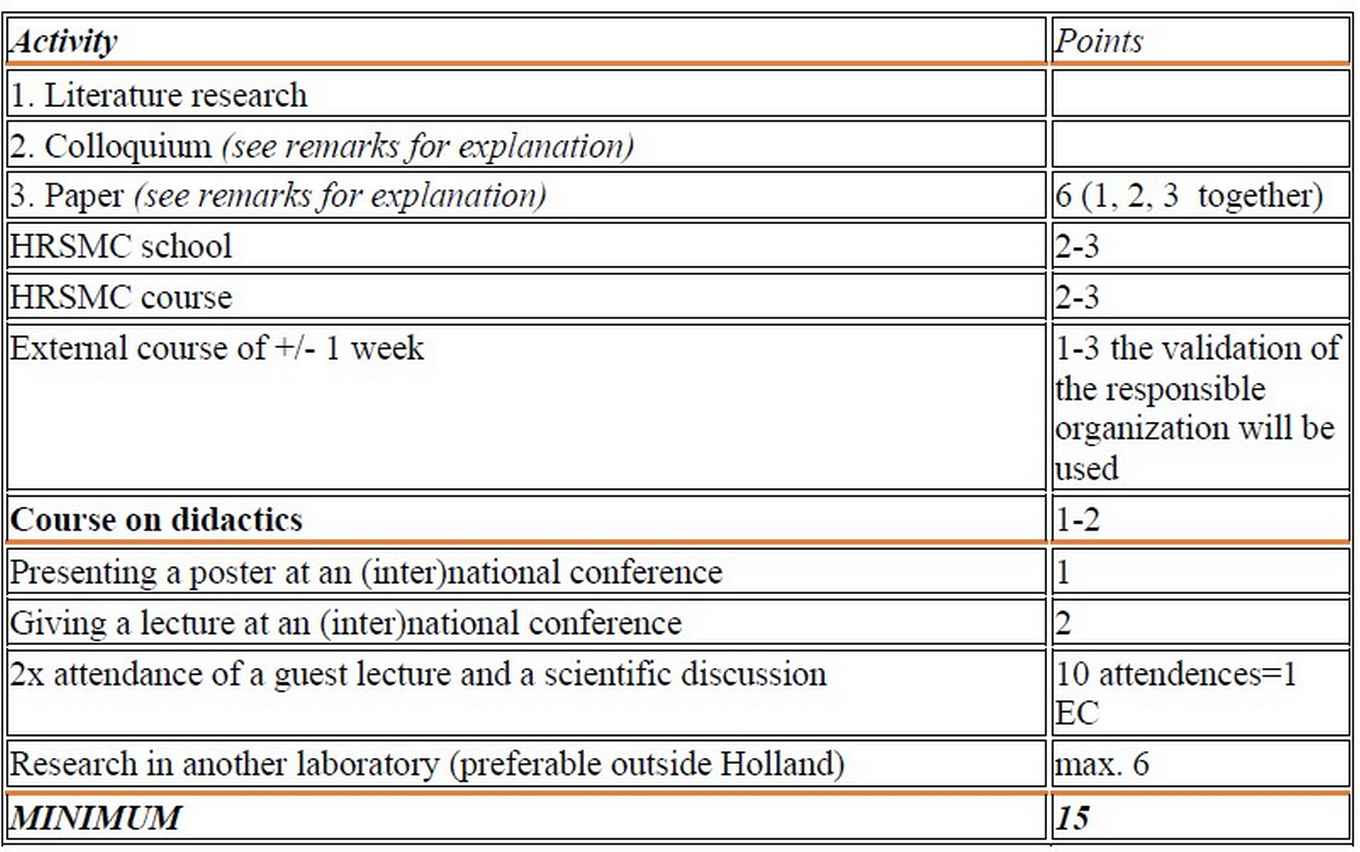PhD Credit Points
- A few months before your defense date, you need to fill out the Credit Point Administration form, provide the updated information, and send it to the HRSMC office.
- The HRSMC management will issue a certificate to PhD students who have met the requirements for the HRSMC PhD certificate (outlined below).
- PhD students who have participated in the HRSMC Class of Excellence may use the credit points from a course or school attended during their master's, only if they haven't already received points for it on their master's diploma. As proof, they must send their master's grade list to the chair of the educational committee.
Credit Points
The values listed in the Overview Creditpoints have been determined in accordance with the European Credit Transfer and Accumulation System (ECTS), where one credit point corresponds to approximately 28 hours of work. In the Netherlands, these are referred to as European Credits (EC).
A minimum of 15 credit points is required to earn the HRSMC certificate. Remarks:
· Every PhD student must complete at least one HRSMC course and one HRSMC school to be eligible for the HRSMC certificate. If no HRSMC course or school aligns with the aspects of the PhD research, an external course or school may be selected instead (though this is not necessary for 95% of PhD students). It is not allowed to follow both an external school and a course. The other items are optional: For the certificate, it is not mandatory to complete a course on didactics or conduct research in another laboratory. However, if these activities are undertaken, a maximum of 6 EC can be awarded. PhD students who have participated in the HRSMC Class of Excellence may use the credit points from a school attended during their master’s, provided they have not already received points for it on their master's diploma. As proof, they must send their master's grade list to the chair of the educational committee.
· The Han-sur-Lesse Winter school ‘Theoretical Chemistry & Spectroscopy’ is not organized by the HRSMC, but many HRSMC staff members are involved. Therefore, this course is considered a HRSMC school for the HRSMC certificate.
· The Solutions through Computational Chemistry School is not organised by the HRSMC, but many HRSMC staff members are involved. Therefore, this course is considered an HRSMC school for the purposes of the HRSMC certificate. Website: https://www.theochem.nl/academy
· A colloquium is a presentation given by a PhD student at the beginning of their research (typically after 3-6 months). The PhD researcher presents their research plans and provides a general background of the project. This colloquium may be based on the research paper.
· A paper should not be confused with a scientific article. A paper is a document that a PhD researcher typically creates at the beginning of their research. This paper includes items like:
- The general background of the research project;
- The plans a PhD researcher has for the first years of their research project.
· 15 points is the minimum requirement and can, of course, be exceeded.
